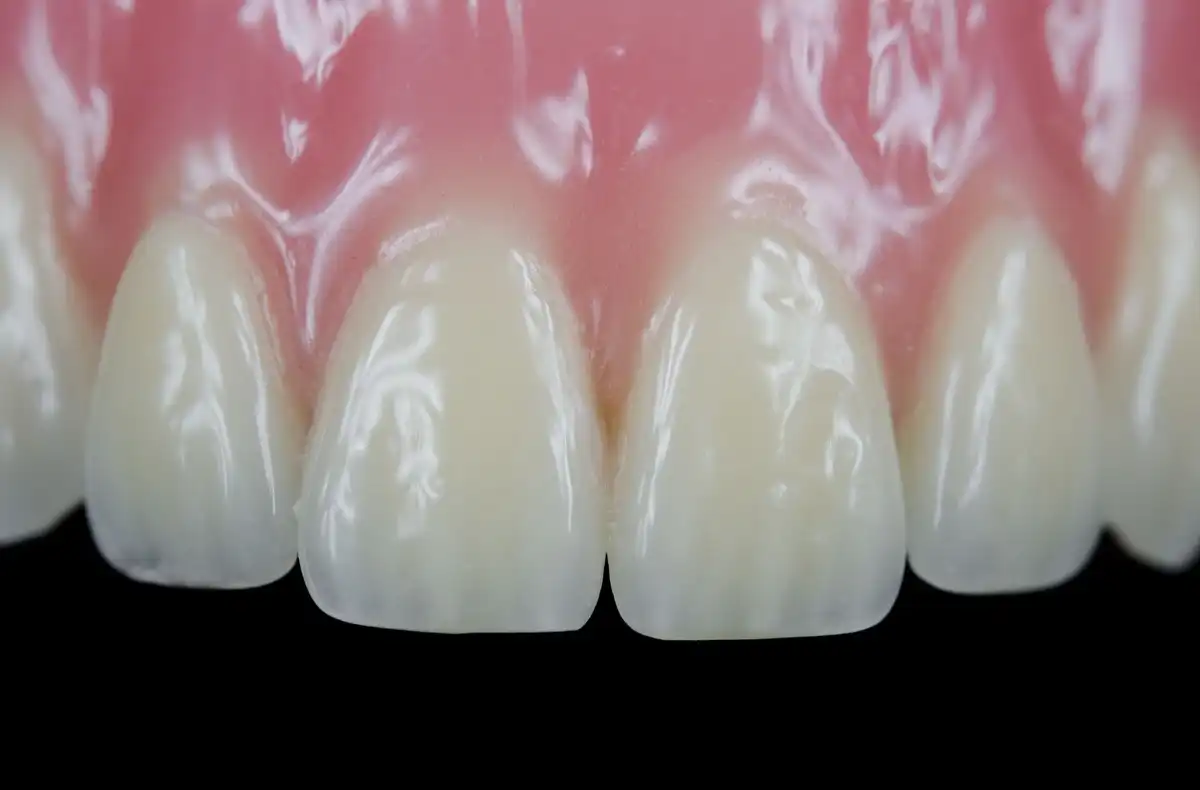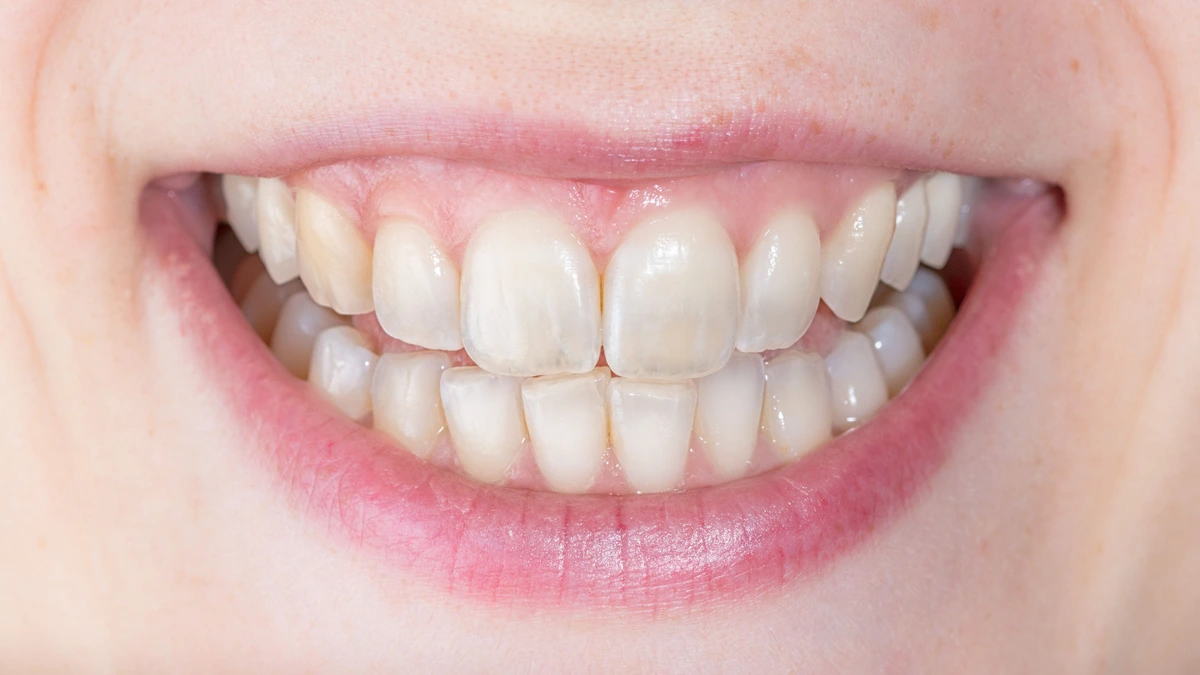Thinning Enamel? How to Spot Enamel Loss & Damage


Your tooth enamel is the hardest substance in your entire body. It’s stronger and denser than bone. Not to be morbid or anything, but that’s one reason why teeth are used for forensics purposes. They can withstand just about anything. But even though teeth are strong, they’re not invincible. Thin enamel is an everyday problem. If you have weak or thin teeth, you’ll want to know how to fix enamel loss before your smile begins to deteriorate.
Are My Teeth Getting Thinner?
Thin teeth are often the result of prolonged acid exposure. Acid can physically erode teeth, causing glossy, thin enamel.
Have you ever seen pictures of teeth without enamel? They usually look frail, darker in color (because of the exposed yellow dentin behind your enamel), and might even start to show signs of chipping or cracks.
You can usually tell your teeth are getting thinner because the enamel seems smoother than normal. As enamel erosion progress, the enamel thins out. Eventually, the teeth appear less white or translucent, even if you’re using bleaching agents.
And finally, thin teeth also tend to be more sensitive.
Causes of Thin Enamel
Acid erosion is probably the most common cause of thin teeth. Depending on your circumstances, this can be caused by:
1. Prolonged Vomiting or an Eating Disorder
Whether you’re nauseous from chemotherapy, have cyclic vomiting syndrome, or suffer from bulimia, each time you vomit it exposes the back of your upper front teeth to high levels of stomach acid. Over time, those teeth will begin to show thin enamel.
2. Acid Reflux Disease/Heartburn/GERD
This is a sneaky one. If you suffer from frequent heartburn or acid reflux, stomach acids are constantly making their way up into your mouth. The most common places to see thin tooth enamel are on the cusps of your back teeth (the pointed chewing surfaces.) There will usually be shallow divots on the top of each cusp.
3. Your Diet
4. Developmental Reasons
Enamel Loss Symptoms
If you’re not sure whether or not you have thin teeth, here are some signs you might want to plan on figuring out how to fix enamel loss.
1. Darker or Yellow Tooth Enamel
Your tooth enamel tends to be white or whitish in color. But the layer of tooth underneath your enamel (dentin) is more yellow. As the enamel thins, the yellow shade of dentin becomes more visible through your teeth. With more erosion comes the gradual darkening of your teeth. Whitening won’t help.
2. Chipping, Brittle Teeth
As the protective layer of your tooth begins to erode, it thins and becomes more brittle. Biting, chewing, or grinding your teeth can cause it to start to chip away at the edges, leaving jagged or flattened biting surfaces. Your teeth may start to look shorter than they used to or develop surface cracks that are visible up close.
3. Increase in Cavities
Tooth decay erodes spots in your enamel, creating holes in your teeth. When there isn’t enough tooth enamel to withstand acids from plaque and food, you’ll see your teeth start to get more cavities throughout your mouth. Remember that not all cavities are visible, so schedule regular checkups and cleanings to get screened.
4. Tooth Sensitivity
Enamel protects the nerves inside of your teeth. As it erodes, the tiny pores (tubules) that house nerve endings throughout your tooth structure are exposed to external stimuli. Everything from temperature changes to certain foods can trigger pain in those teeth. Sensitive toothpaste may help to an extent.
What Teeth Without Enamel Look Like
If you were to see pictures of teeth without enamel, they would look misshaped, pitted, and dark in color. The teeth may look yellow or more of a brownish shade.

When you talk about teeth without tooth enamel, they usually have at least some enamel on them or very thin enamel. But structurally they tend to be misshaped or severely worn, because of the lack of protective “shell” around them.
Technically speaking, areas of tooth decay do not have enamel. If you’ve ever seen someone with a dark brown spot or holes across their teeth, the decay has eroded its way through the enamel at that location, revealing the layer of dentin underneath. They just don’t look healthy or white.
Preventing Thinning Enamel
1. Fluoride Gel and Rinse
The best way to combat weak teeth and enamel erosion is to strengthen the healthy enamel you already have. Prescription grade fluoride gel offers the highest level of protection. It’s best to use it at night right before you go to bed so that the minerals can soak into your teeth over an extended timeframe.
2. Watch Your Diet
3. Take Your Medication as Directed
Don’t tough out your heartburn. If your physician has you on reflux medication, be sure to take it. Your esophagus isn’t the only thing that will thank you! The long-term investment in protecting your teeth will pay off in the decades to come. Don’t skip it just because you can’t feel the burning sensations. Acid erosion can sneak up on you without you realizing it.
4. Wearing a Nightguard
People who are prone to bruxism or already have weak teeth may experience amplified tooth wear from grinding their teeth at night. Wearing a custom, professionally-fitted nightguard will offer the best level of protection.
How to Fix Enamel Loss
Unfortunately, once tooth enamel is gone, you can’t get it back. The type of cells that make up teeth don’t regenerate or repair themselves to make the tooth whole again. That’s why the best way how to fix enamel loss always starts with prevention.
But usually, people are far past the point of prevention before they realize something is wrong. When that’s the case, they need to see a dentist for restorative treatments.
Depending on the extent of damage there is, a full coverage dental crown may be the best and only option. Crowns essentially replace the enamel around a tooth, covering it up to the gumlines where enamel typically tapers off.
Isolated areas of enamel erosion—such as cavities or deformities—can sometimes be repaired using minimally invasive techniques. Dental bonding, white fillings, or cosmetic veneers are a few examples. These restorations only cover or fill in a specific area, making them ideal for minor to moderate enamel damage.
Keep in mind that as enamel erodes, the tooth becomes progressively weaker than before. So even if your teeth aren’t wearing down or chipping much in the beginning, they’ll become more susceptible to structural damage as the tooth continues to thin out. The complications can compound on one another the longer you go without professional attention. As the erosion spirals out of control, your entire smile may eventually reach a point where it’s no longer restorable or requires complex, advanced treatments to bring it back to a stable level of health.
Talk to a Dentist About Enamel Loss
By the time teeth start to look physically thin or begin to wear down, you’re past the point of needing to speak with a dentist. It’s crucial to get in for a dental exam at your earliest opportunity. That way your dentist can prescribe the best restorative treatment before your teeth become non-restorable. They can also help you prevent additional erosion in the healthy teeth you still have.
If you’re embarrassed because of enamel loss, rest assured you’re not the only one with this condition. Especially for someone with an eating disorder or past drug use, discussing your weak teeth can be a little challenging. But your dentist will confidentially provide you with quality care that both puts your mind at ease and helps you get your smile back on track. As healthcare professionals, that’s our job! You’ll receive complete care related to your teeth from both a physical and emotional standpoint. Your dentist’s office is one of the safest and most confidential places to discuss your unique oral health concerns.
Overcoming Enamel Erosion
You can’t get tooth enamel back, so recognizing the signs of erosion is one of the most important things you can do. What do teeth without enamel look like? Dark, disfigured, or brittle. Knowing how to fix enamel loss starts with good oral hygiene and nutritional habits, keeping your mouth free of acidic plaque and foods throughout the day. Most importantly, make sure you see your dentist for regular checkups to intercept enamel erosion as early as possible. Always communicate your health conditions—such as reflux disease or eating disorders—with your dentist, as they can directly impact enamel erosion over time. Your dental team will work with you to find preventative techniques or appropriate treatments to keep your mouth strong and attractive.

Make your inbox smile!
Subscribe






